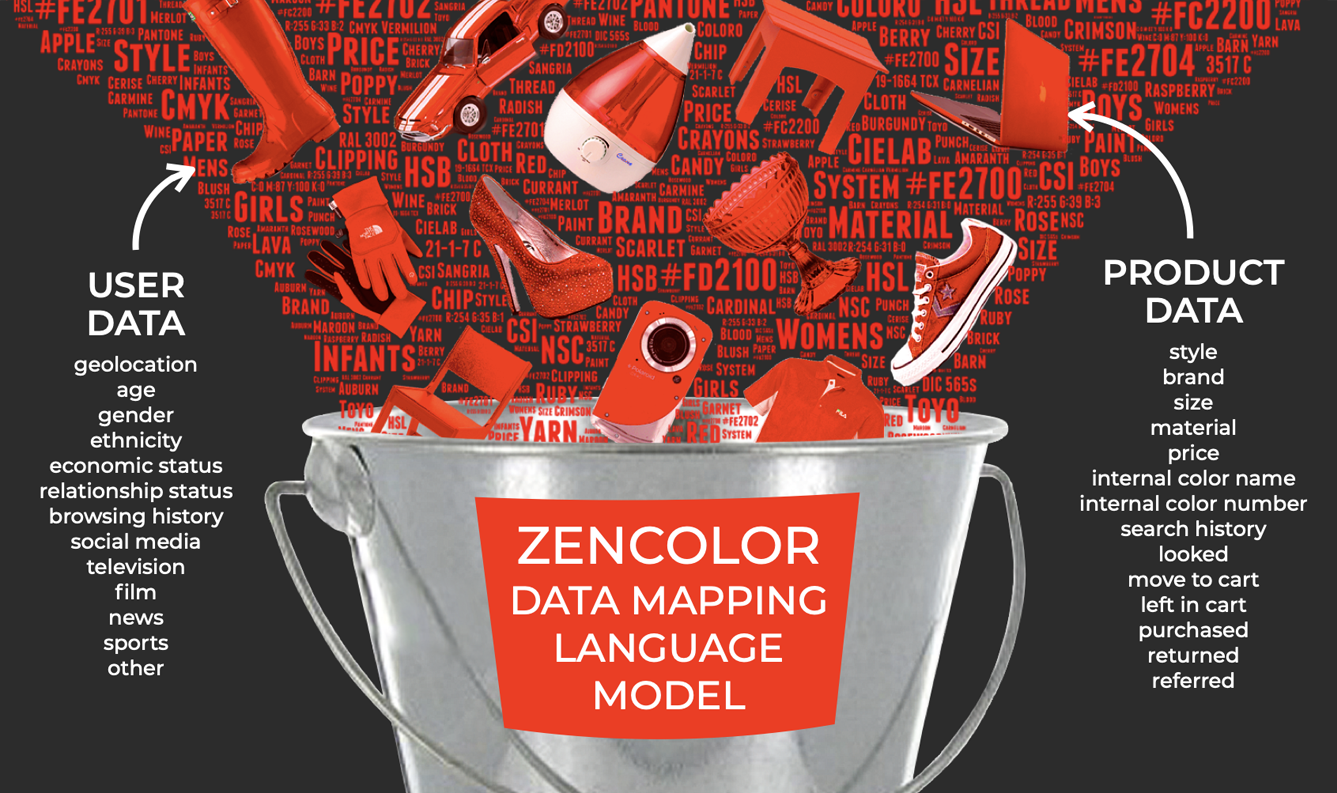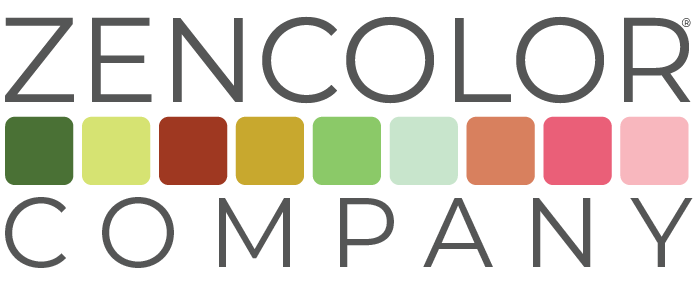

MARKETING IS NOT A SUBSTITUTE
FOR USABLE RETAIL DATA.
At the present time, the ability to collect retail data analytics and return value is primitive at best. This likely accounts for the reason that the addressable market size was only $8.9B in 2023. There is no means to currently collect meaningful color data. If color accounts for over 85% of the reason a consumer purchases a product, this presents an enormous problem. Further, color is the common denominator that all product shares. Without a common denominator it is impossible to organize the consumer product preference data.

COLOR IS THE COMMON DENOMINATOR
THAT ALL PRODUCTS SHARE.
Color is over 85% of the reason for all consumer purchasing decisions. Understanding personal color preference is critical to retail data analytics. There needs to be a method to properly structure the data to return meaning and value. The zenColor universal data mapping language model provides the “common denominator” that is currently missing. This is needed to organize and structure the “sticky data” (data that adheres to the color common denominator).
Further, the disconnect between the addressable market size for data analytics and data marketing suggests that there is a huge revenue opportunity for zenColor.

RETAIL DATA ANALYTICS, UNLEASHED
POWERED BY ZENCOLOR
The “sticky” product data adheres to our universal color language model. This allows the data to be properly organized, structured, and analyzed to give it meaning and value. Sticky data includes, but is not limited to, all the information about the product- season, year, material, shape, size, price, color name, color number, etc. This can be integrated into the user profile, providing data personalization.
